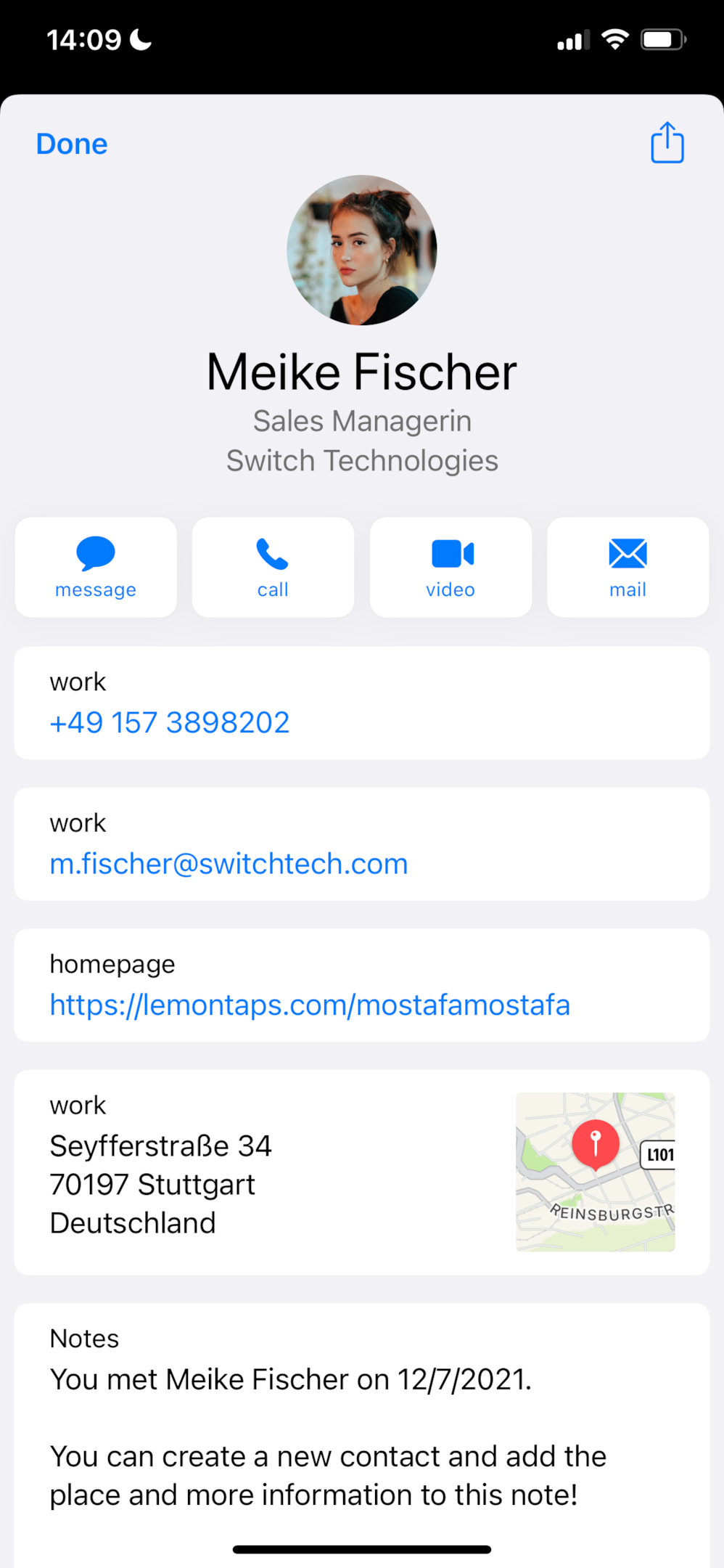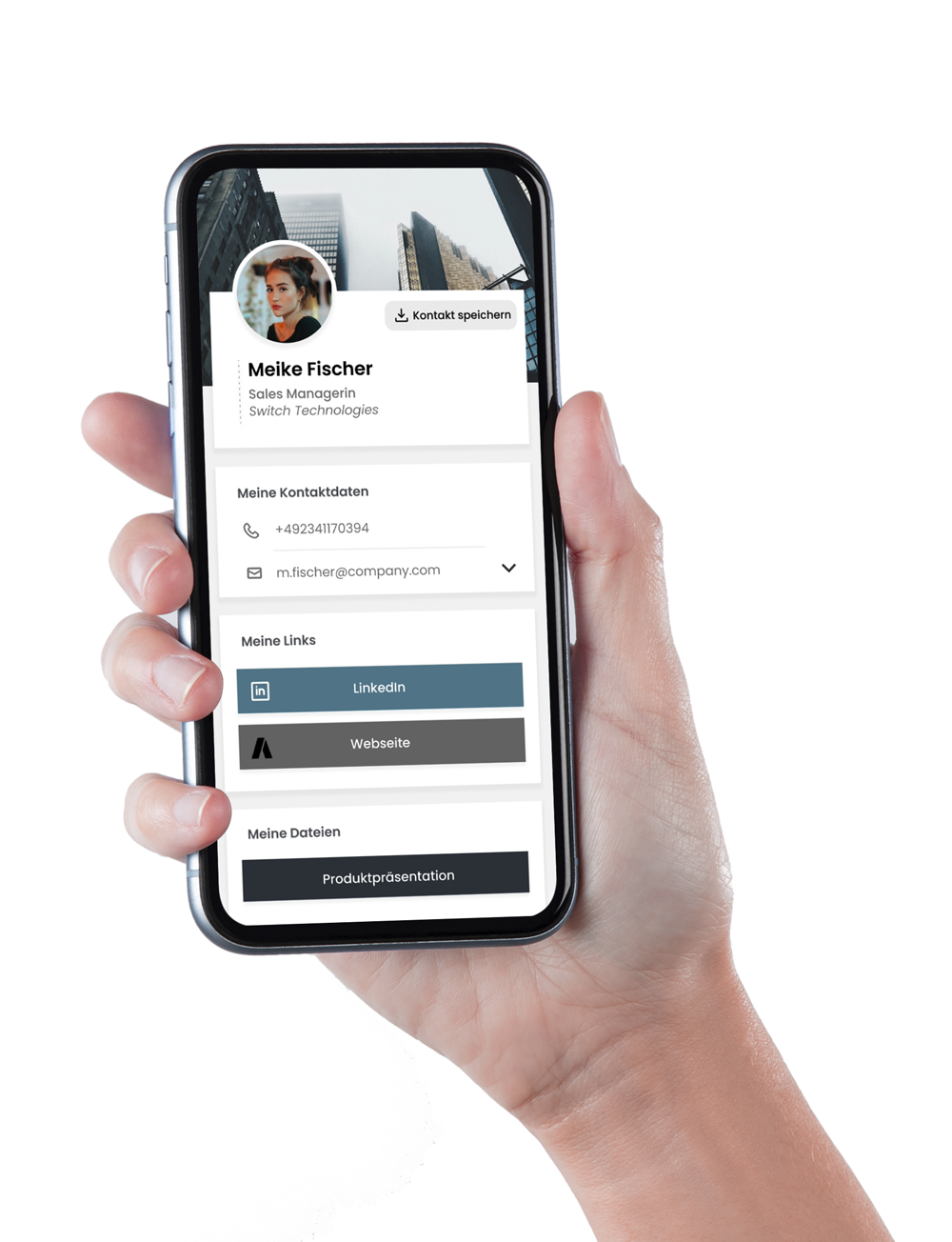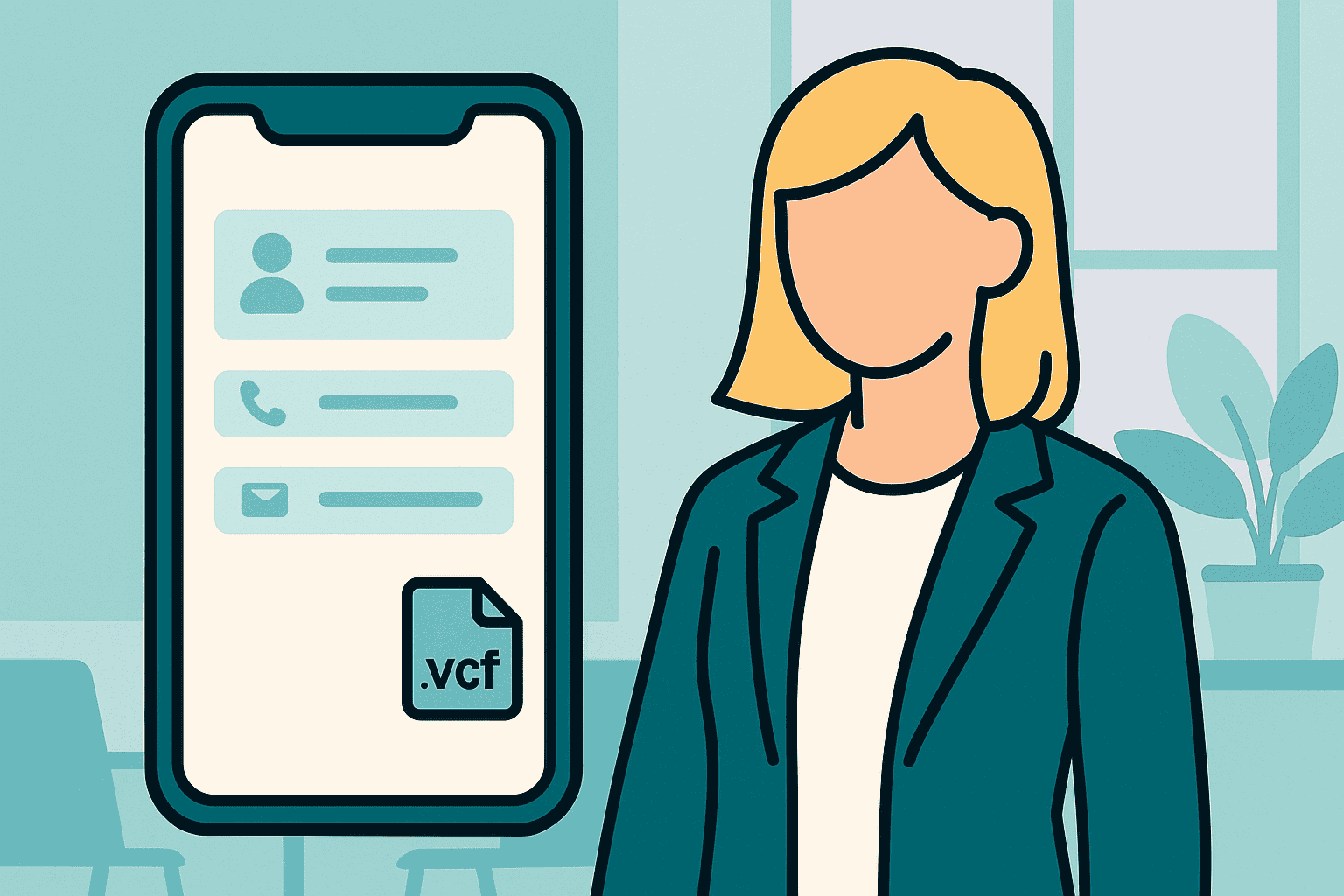In today's digital world, where time is a precious commodity, traditional business cards are no longer the only way to exchange contact information. Technology has given us a new and more efficient method - the vCard.
You've probably come across a vCard before without even realizing that it was one. That's why in this article we explain what a vCard actually is, how to use it and what advantages it offers you personally.
The basics: What is a vCard?
A vCard, or "virtual business card", is an electronic file that contains contact information such as name, address, telephone number, e-mail address and website URL. Similar to a conventional business card, it is used to exchange contact details.
The information is saved in the vCard file format, which means in the standardized format vcf - "virtual contact form" - i.e. a text file. Whenever you create a contact in your smartphone contact book, your Microsoft Outlook or another location, for example, it is saved as a vcf file.

Hands-On: How to use a vCard?
The practical thing about vCards is their versatility and ease of use. They can be easily shared via email, instant messaging apps or even social media platforms. You can also share vCards via QR code or smart NFC card in a customized design. When you receive a vCard, you can import it directly into your address book and save it. This significantly simplifies the process of exchanging contacts.
The reason: What are the advantages of a vCard?
The use of a vCard offers numerous advantages over traditional business cards.
Sustainability.
Firstly, using a vCard is more sustainable as it is digital and does not use paper resources. It might surprise you, but experience shows that over 88% of all paper business cards end up in the trash.
Efficiency.
Because... what usually happens to the contact data? Right, they are typed up and digitized. This tedious step can be avoided with vCards, making them more efficient and practical than a traditional business card.
Flexibility.
A vCard is not only easy to share and save, it is also very easy to update. So if there is a change to names, titles, phone numbers or anything else, you can update all the data on your vCard immediately and share the new version with people. With a vCard there are no annoying waiting times, as with reprinting paper cards.
Save costs.
Updating your vCard does not incur any new printing costs. Using vcf files as an alternative to paper is therefore more cost-effective. Simply save the new vCard on your smartphone, share it via QR code and your contacts will immediately have the latest information!
More information.
Furthermore, a vCard offers the option of including additional information such as links to websites or social media platforms or even uploading relevant files such as pitch decks or exposés. This expands the transmission of contact data and thus offers considerable added value for both the contact provider and the contact recipient.
Compatibility.
With vCard files, it does not matter which device, for example whether Windows or Mac, reads the business card. A vcf file is standard for contacts and is therefore easy to call up and save with most programs.
Professional appearance.
Your contacts will have a professional impression of you and won't have to worry about where to find your information for a potential follow up message.

A vCard therefore not only serves the obvious purpose of simplifying the exchange of contact information, but can also save costs and time, as well as share additional information that would be lost on a conventional business card.
Level-up: vCard & digital business cards
A digital business card is essentially a form of vCard that is enriched with visual elements.
More than "just" text.
While a vCard is purely text-based, digital business card profiles offer an appealing, individual presentation of contact data in a personal or corporate design. It shows company logos, profile and cover images as well as color and design elements. These digital profiles can also be shared with contacts via QR code, link in emails or NFC.
The business card is called up as a website on the smartphone and can then be saved in vCard format in the contact book. This makes exchanging contacts uncomplicated, efficient and an experience with a wow effect!
vCard or online business card? Both!
Lemontaps offers both versions for sharing - for example in the form of an "offline QR code" business card and an "online QR code" business card in Google/Apple Wallet or as a lock screen.
The offline QR code is a standard vCard in vcf format and opens the contact book directly from the smartphone. This is practical if, for example, the internet is overloaded at a large event. The online QR code, or the smart NFC card, opens the digital profile as a website including all images, links, files and contact form. An app is not required for either of these methods.
Scalability.
The use of QR codes on conventional business cards has already arrived in the corporate world. This usually involves a QR code for a vCard. Some companies prefer a fully digitized business card to a comparatively one-page vcf file in the form of a QR code on paper.
For innovation leaders and digital pioneers who want to go one step further than the vCard, there is the business card platform for companies from Lemontaps. We automate all processes relating to business cards and contact exchange and take your public image to the next level. Saving costs and time while acting sustainably and innovatively has rarely been so easy.
Test for free
If you are curious about how this works, simply create your own digital profile with Lemontaps here. This way you can use the must-have networking tool of the future today!
So short & crisp...
All in all, the vCard is an innovative solution to the challenges of our modern business world. Their simplicity, efficiency and customizability have made them an indispensable tool for exchanging contact information. So, why go through the hassle of traditional business cards when you can have the digital future right at your fingertips with a vCard?


 Contact sales
Contact sales
 Support
Support
 Login
Login



